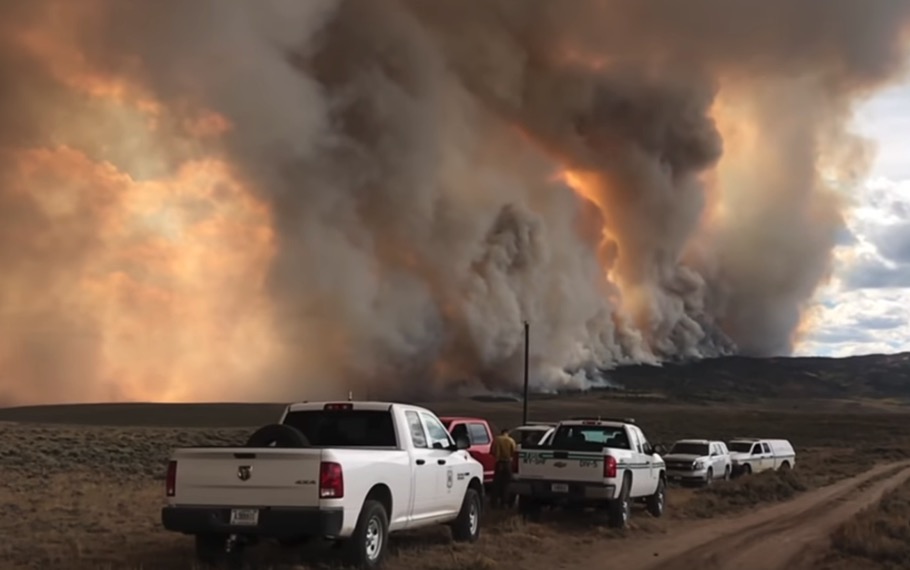
During a 90-day detail to Nevada this year Micah Booze recorded video which he put together in the finished product below. It appears that he had an active three months. The video shows some pretty fancy editing. Thanks Micah.
News and opinion about wildland fire
Coal-burning trains operated by D&SNG in Colorado have started multiple wildfires in the San Juan National Forest
According to an article in the Durango Herald the company that operates a steam-powered railroad for tourists north of Durango, Colorado has been paying only about half of the costs of suppressing numerous fires started by the coal-burning locomotives.
The newspaper filed a Freedom of Information Act request in order to get the U.S. Forest Service to release information about the fires caused by the train that burned in the San Juan National Forest. Much of the 42-mile route the steam engines travel between Durango and Silverton is within the National Forest.
The Herald studied seven of the major fires that occurred between 1994 and 2013 that investigators determined were started by the train. In these cases the railroad offered to pay much less than the amount billed by the Forest Service. The agency settled with the company, agreeing to allow payments of between 20 and 88 percent for the seven fires, averaging 53 percent of the billed amounts.
We assembled the data from the article and created the table below.

The U.S. Forest Service has not released the cause of the most recent fire that started near the railroad, the 416 Fire that burned about 54,000 acres and ran up suppression costs totaling approximately $31.3 million as of six weeks after the fire started.
At least six local residents and business owners in the Durango area have filed a lawsuit against D&SNG alleging that the train started the 416 Fire on June 1.
D&SNG reports that they plan to replace some of the coal-powered locomotives with diesel engines during periods of high wildfire danger.
Click here to see all articles on Wildfire Today about trains and wildfires.
Thanks and a tip of the hat go out to Gary.
Typos or errors, report them HERE.
They hope to acquire it from the National Guard
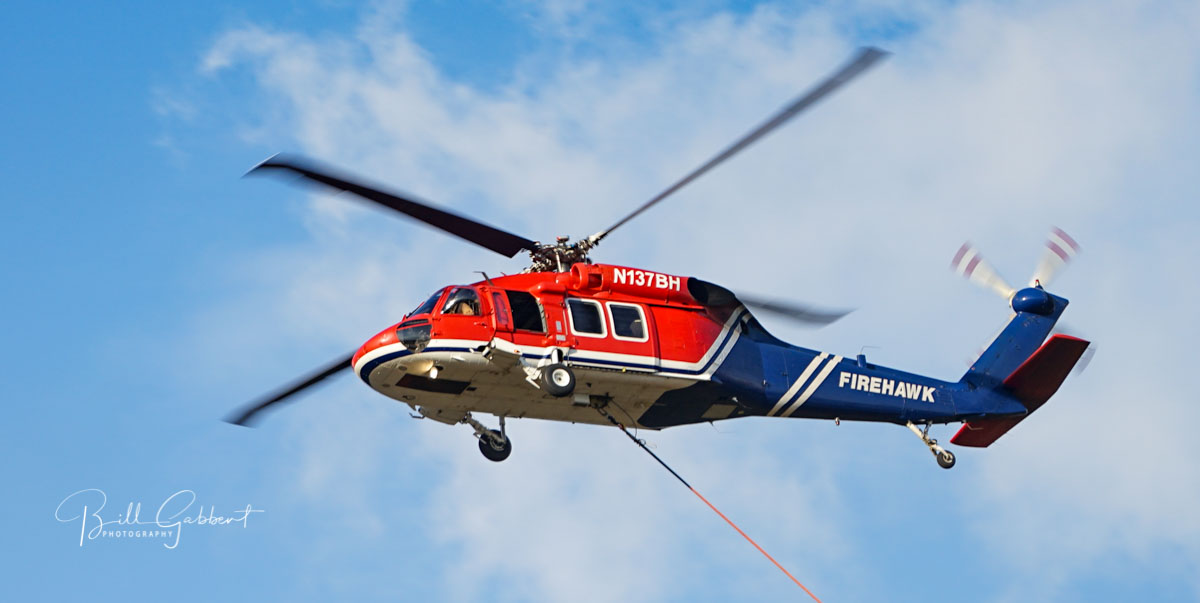
The Santa Barbara County supervisors voted 5-0 to approve the submission of a competitive bid for the fire department to purchase a Blackhawk helicopter from the National Guard.
Currently the agency operates two Bell OH-58A+ helicopters used primarily for law enforcement operations. These aircraft are equipped with multi-agency communications radios, Forward Looking InfraRed technology, powerful searchlights, LoJack stolen vehicle tracking equipment, photo and video equipment, and mapping technology.
The department also operates three Rescue/Firefighting aircraft: two Bell UH-1H Hueys and a Bell UH-1N twin-engine Huey. All three Huey Aircraft are equipped with rescue hoists, capable of lowering rescue personnel into remote or otherwise inaccessible locations and extricating lost or injured persons who could not be rescued by conventional means. All of the Huey aircraft are also capable of fire suppression missions using either fixed water tanks or removable long-line buckets.
Below is an excerpt from an article in the Santa Ynez Valley News:
Interim Fire Chief Michael Dyer said the Blackhawk helicopter will cost less than $1.73 million, noting Cal Fire just purchased two new Black Hawks for between $20 million and $25 million each. He said there will be some additional costs to remove military-specific equipment from the Black Hawk and install the gear necessary to turn it into a Firehawk aerial firefighting unit. The annual operation and maintenance costs also will be higher than the choppers the county currently operates.
County Fire’s Hueys fly at 120 knots and carry 360 gallons of water, but the Firehawk will fly at 190 knots and carry 1,000 gallons of water, which can be released as a full load or in three separate loads. It can also carry twice as many personnel, Dyer said.
In addition to the $1.7 million purchase price of the Blackhawk, the additional costs of retrofitting and maintenance will bring the total up to about $4.7 million. The most costly task will be the installation of the 1,000-gallon water tank including extending the landing gear, raising the aircraft to make room for the tank.
The helicopter they hope to purchase has been used as an air ambulance by the National Guard. It has about 3,200 hours on it and was built in 2002.
One of the Hueys now operated by the department flew in the Vietnam War and is 51 years old. Parts are becoming difficult to find for the helicopter fleet, with all of them being previously owned and retired by the military.
Two of the district supervisors stated that the fire department needs to develop a long range strategic plan for managing and funding the helicopter fleet.
At least three other firefighting agencies in California have recently purchased new Blackhawk helicopters, CAL FIRE, Los Angeles County , and San Diego Fire.
The article was revised to show that San Diego city, rather than San Diego County, is acquiring a new Blackhawk.
It happened on the Cougar Creek fire in Washington
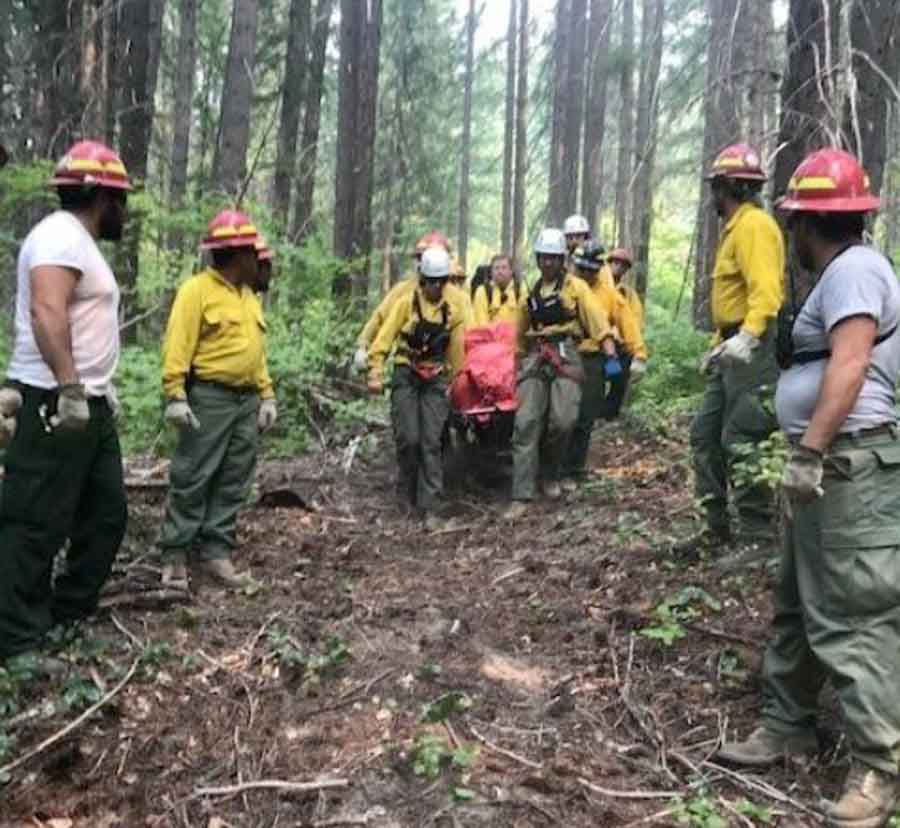
A report has been released for what turned out to be a difficult and complex rescue after a water tender rolled 150-feet down a slope. It occurred August 18, 2018 on the Cougar Creek Fire outside of Leavenworth, Washington. The steepness and heavy vegetation slowed efforts to extract and transport the 300-pound truck driver but in spite of the challenges the person identified as “Robert” in the report arrived at a Life Flight helicopter about 2 hours and 20 minutes after the first 911 call.
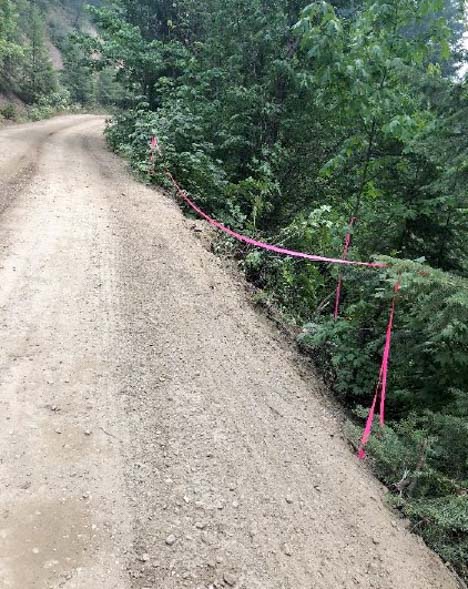
A system of ropes was necessary in order for personnel to access the victim from the top side, but the report heaps a great deal of praise on a Type 2 hand crew that from a lower road…
“…cut a highway through the forest in a matter of minutes.” In fact, the [Division Supervisor] later recalled that the crew was so fast and so efficient that they cleared the path in front of the Medics who were arriving from the bottom. These Medics coming up from the bottom were able to maintain a “comfortable walking pace” behind the crew as they worked.
The timber canopy virtually eliminated the possibility of extraction by a helicopter with hoist or short haul capabilities. Plus, there was a three-hour ETA for the helicopter.
The 30 people on scene carried the victim in a Stokes basket down the steep slope to a waiting ambulance below, using a standard carry and caterpillar (or conveyor belt) system depending on the incline.
A section in the report section titled “Drills Work!” included this:
Last year, a Montana Incident Management Team put the Type 2 Crew (who cut the access line up to the accident site on this incident) through a drill that taught them how to use the caterpillar system and polished their cutting skills. This crew’s members said specifically that the reason they were so successful on this incident was because of this earlier drill that they had experienced in Montana.
NIFC produced a video about the management of a serious injury complicated by a helicopter incident that occurred on the Deer Park Fire on the Sawtooth National Forest in central Idaho in 2013. In the video, which can be seen in the Wildfire Today article about the incident, you can see a description of the conveyor belt technique for moving a stokes basket in rocky or steep terrain. It begins at 5:25 in the video.
The entire 11-page report about the August 18, 2018 accident on the Cougar Creek Fire can be downloaded HERE (1.4 MB).
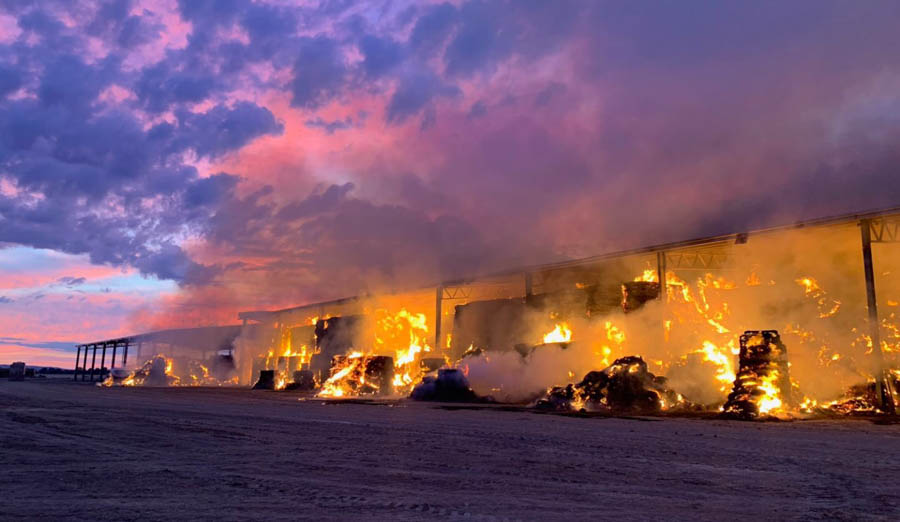
On December 12 firefighters from New South Wales Rural Fire Service and Victoria Country Fire Authority responded to a fire in a hay shed on Howlong-Balldale Road northwest of Howlong, NSW.
In a tweet the NSW RFS warned about spontaneous combustion:
With warmer weather the risk of hay stack fires increases. This fire attended by crews between Howlong & Corowa. With hot weather on the way landholders should check the temperature in stored hay & if possible ensure that farm machinery is kept in a separate shed.
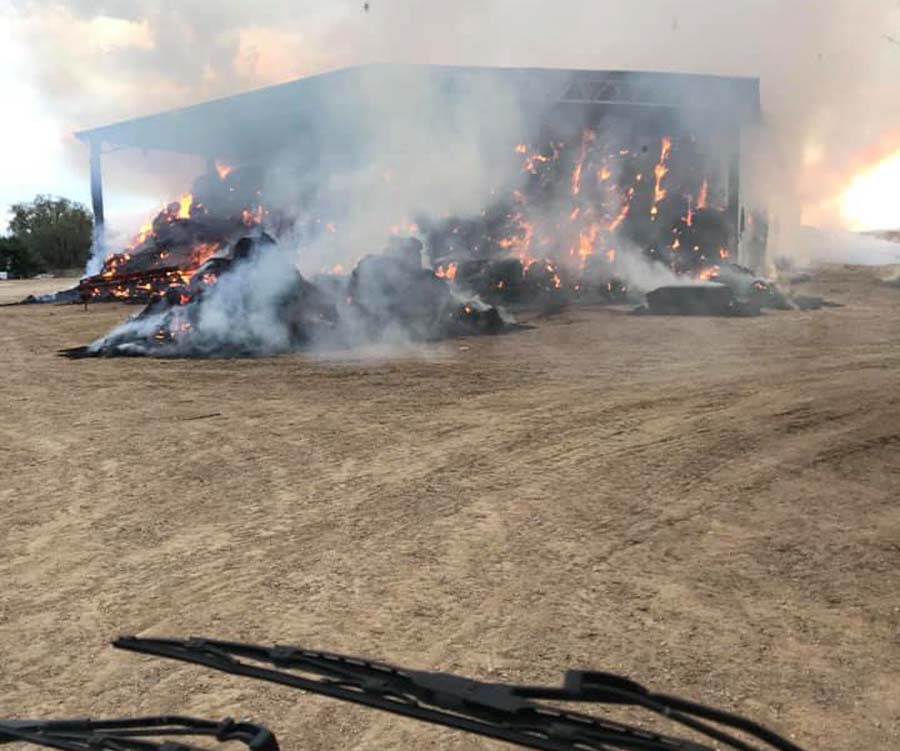
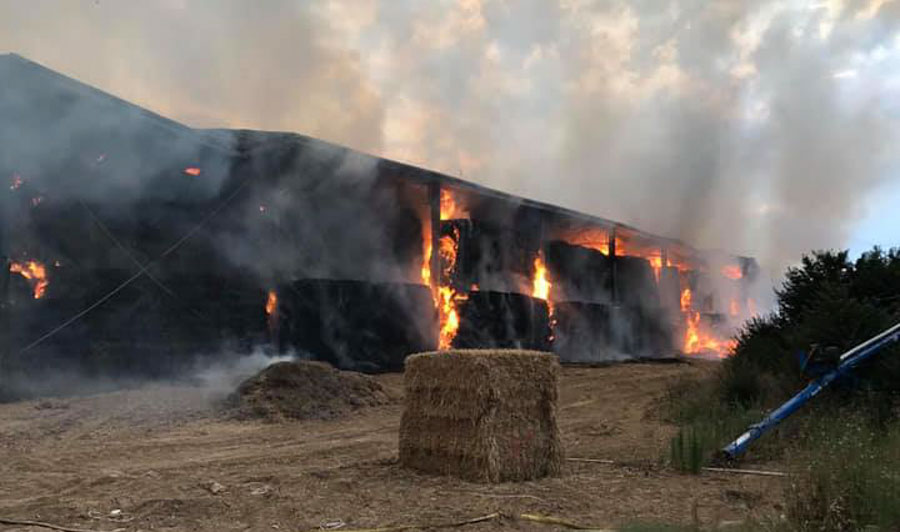
The University of Montana has information about spontaneous combustion in hay:
“Oddly enough, wet hay is more likely to lead to a spontaneous combustion fire than dry hay. If hay is put into a barn or stack when it has more than about 22 percent moisture, not only does the hay loose forage quality, but it has an increased risk of spontaneous combustion.
“High moisture hay stacks can have chemical reactions that build heat. Hay insulates, so the larger the haystack, the less cooling there is to offset the heat.
“When the internal temperature of hay rises above 130 degrees Fahrenheit (55 degrees C), a chemical reaction begins to produce flammable gas that can ignite if the temperature goes high enough.
“Hay fires generally occur within six weeks of baling. Heating occurs in all hay above 15 percent moisture, but generally it peaks at 125 to130 degrees F, within three to seven days, with minimal risk of combustion or forage quality losses. Temperature within a stack then declines to safe levels in the next 15 to 60 days, depending on bale and stack density, ambient temperature and humidity, and rainfall absorbed by the hay.
“To avoid hay fires, small, rectangular bales should not exceed 18 to 22 percent moisture, and large round or rectangular bales should not exceed 16 to 18 percent moisture for safe storage.
“In addition, you should check your hay regularly. If you detect a slight caramel odor or a distinct musty smell, chances are your hay is heating. At this point, checking the moisture is too late, and you’ll need to keep monitoring the hay’s temperature.”
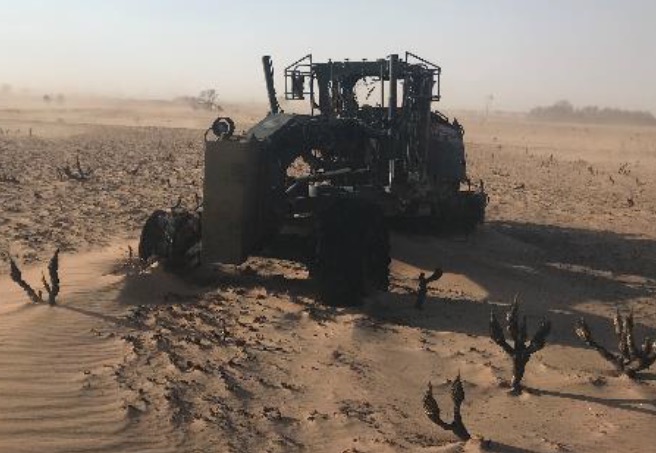
The Wildland fire Lessons Learned Center has released a Facilitated Learning Analysis on the fatality of Jack Osben, the grader operator who was burned over while working on the Shaw Fire in Western Oklahoma April 12, 2018. The tragedy occurred during extreme conditions — extended drought, 100 degrees, 5 percent relative humidity, 45 mph winds, and the fire was burning in thick grass that had not been grazed or hayed in seven to eight years.
The executive summary is below. The entire document can be downloaded (4 MB file).
*Except for Jack Osben, all names are pseudonyms
On April 12th, 2018, 61-year-old Jack Osben, a motor grader operator for Roger Mills County in Oklahoma and volunteer firefighter died as a result of thermal burns while providing initial attack to the Shaw Fire. The wildfire grew to approximately 3,500 acres in a mixture of grass and shrubs during a Red Flag Warning day. The employees of Roger Mills County were in a state of readiness due to a mixture of prolonged drought, extreme heat, and gusting winds that had created extremely dangerous wildfire conditions.
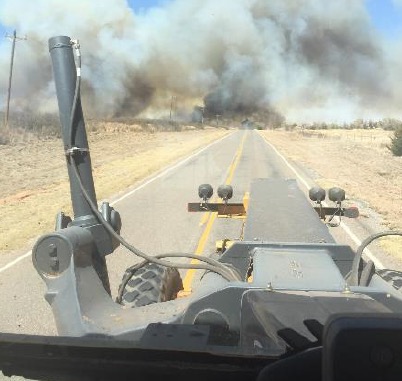
Jack was performing progressive line construction using a motor grader on the Shaw Fire. While he had been working as a grader operator for a few years, he had limited experience using the grader related to fire suppression activities. Between 1400-1430 hours Jack met up and began working with Alex, a fellow grader operator who had more than two decades of experience fighting fire.
Although they entered the field at different locations, they converged almost immediately. Alex instructed Jack to fall in line behind him to improve the initial grader line. After working together to establish line for about 4,000 feet, Alex lost sight of Jack’s grader in the smoke and flames, which had grown significantly and shifted directions quickly.
Due to the fire’s shift in direction, Alex was forced to abandon his grader. He began to walk toward a nearby road when he spotted Jack, who was also on foot emerging from the smoke. They spoke briefly when they met. Alex observed that Jack had visible burns to his arms and was possibly suffering from smoke inhalation. The reality was that Jack’s injuries were much worse than they appeared. He died as a result of thermal burns either during transit in the ambulance or right after arriving at the hospital.
This accident took place in Western Oklahoma where the tactical use of motor graders for wildland fire line construction is common. Additionally, there is different emphasis on values at risk, namely that firefighters in Western Oklahoma commonly protect grass for cattle grazing. Other regions may rank grass as a low value-at-risk but it is absolutely a consideration for how people in this region fight fire and manage land1.
This is the first Facilitated Learning Analysis (FLA) to emerge from the State of Oklahoma. In brief, the FLA process is meant to facilitate learning from unintended outcomes by interviewing people who were involved in the event, and sharing a collective story of their experiences. We also offer lessons learned from those involved and with their help, generate recommendations that may be useful for people within and outside of the region.
For many readers, this analysis will serve as an introduction to a different way of fighting fire with some of these methods appearing unconventional. But, in the words of one of the grader operators, “you make do with what you have.” Even if the methods and context are different, this statement ties together the ethos of wildland firefighters everywhere. It is also important to note that the men and women of Roger Mills County are exceptional at what they do and have an impressive record of doing it safely.